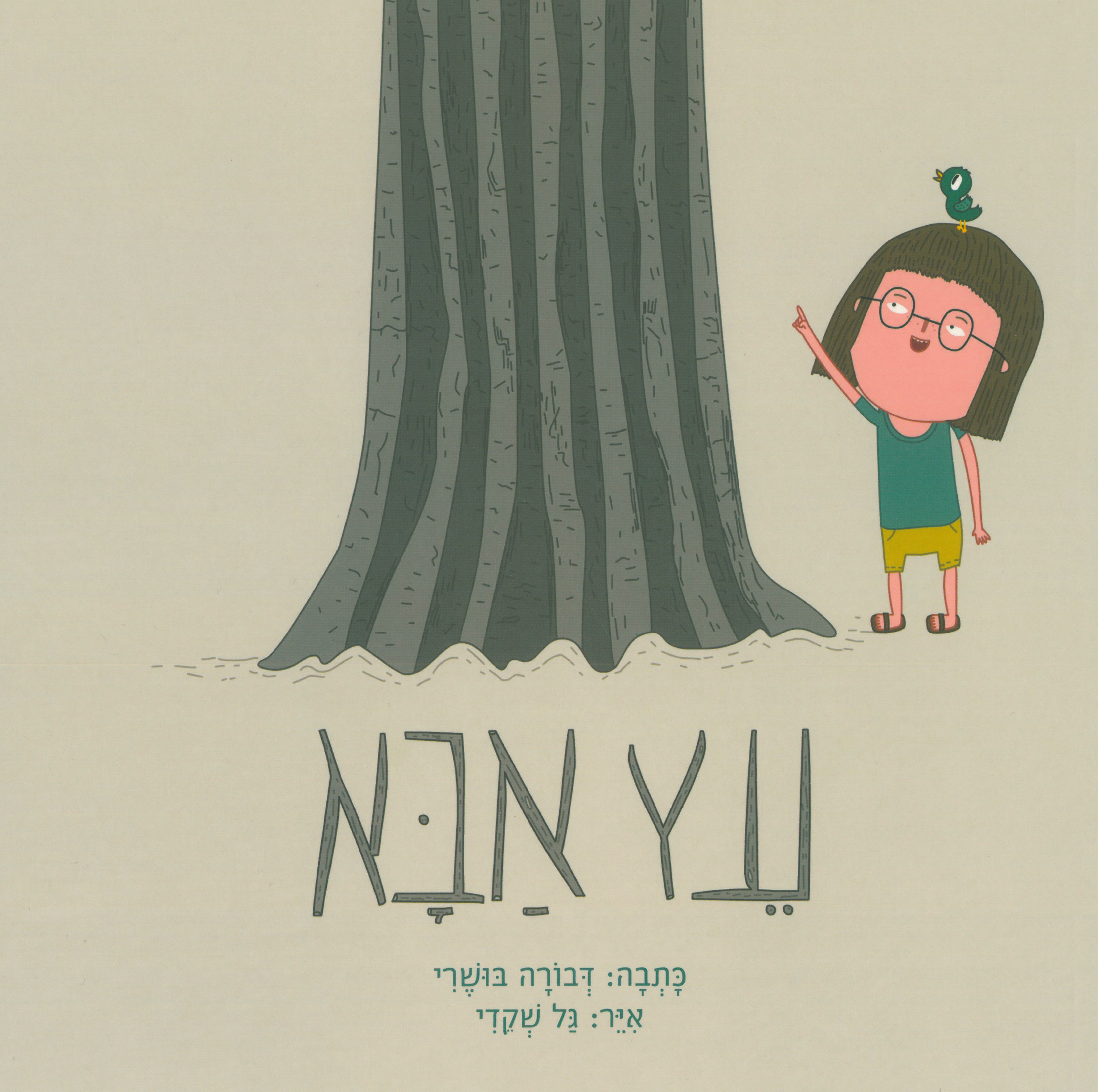The Daddy Tree / By DevoraBusheri
Illustrated by Gal Shkedi
Dear Parents,
A new and exquisite Israeli story about the bonds that exist between one generation and another, and between humans and nature. This story was inspired by traditional Jewish source texts and may start a family conversation about past and present, and about the deeds of one generation for the sake of generations yet to come.
“I found a world full of carob-trees” (Babylonian Talmud, Tractate Ta’anit 23:71)
Caring aboutand planning for the future are uniquely human characteristics. We are born into a world filled with good things, and we enjoy the benefits of material abundance, discoveries, and inventions, thanks to the labors of many previous generations. Like our predecessors, so we, too, continue to plan and create for the benefit of generations that will come after us.
Jewish tradition places great value on planting and preserving the world for the sake of generations to come. This year, the year 5775 in the Hebrew calendar, is a sabbatical year in Jewish tradition—a time when it is customary to let the land and the trees “rest” and enable the soil to recover and replenish itself. The sabbatical year also embodiestheconcept of postponing immediate gratification in order to invest for the future.
“The Daddy Tree” underscores the beauty of belonging to a family and of being one link in the chain of generations. It strengthens our understanding that both we and our childrenwill continue to create and preserve the world for future generations.
Family Activities
- Spend some time together examining Gad Shkedi’s illustrations. Notice the many different animals featured in the illustrations, alongside the trees. Compare the various trees: how many trees are mentioned in the story? Which are fruit trees, and which don’t bear any fruit? Did you notice that the end of the story is toldusing only illustrations? Tell the story in your own words.
- Do you perhaps have a favorite tree in your own yard, or near your home? Does your favorite tree have a “story”? You could take your children on a “tree tour” in your neighborhood. Can you spot any of the trees that appear in the story? Can you identify other types of trees? Compare the various trees you find: what is the benefit of each kind? Which trees are decorative, and which bear fruit? How do we know if a tree is young or old? You might pack this book, a blanket, and a light picnic, and read the story together in some lovely spot outdoors, under a tree. Then (if local environmental regulations allow) you could gather fallen pine-cones, bits of tree bark, leaves, etc., and use them to create a work of art when you get back home.
- In the story, Hannah wants to climb a tree “now,” and her father wants to rest “now.” For many families, this situation is all too familiar. How do you respond when there are conflicting desires in your family? You might discuss things we want immediately vs. things for which we must wait, along with the need to consider others’ wishes and to be patient.
- Trees provide us with an abundance of good things. You could go from room to room in your home and try to identify everything that comes from trees, for example: furniture made out of varying kinds of wood, olive oil that we use in cooking, maple syrup from the sap of the maple tree, wine and raisins harvested from grape vines, and so on.
- Do you know any other stories about trees (for example: the traditional tale of “Honi the Circle-Maker and the Carob Tree,” featured below; the poem “The Tree Man” by Shlomit Cohen-Assif; “Mr. Mini and the Apple Tree” by Orit Raz, or “What Do We Need For…” by Gianni Rodari)? Look for these books at home or at the library, and read them together.
- In Jewish tradition, it is customary to plant a tree to mark important milestones in one’s life. How does your family celebrate or remember important occasions and people? Does your family plant trees to mark a birth and/or other major occasions in your lives?
- Various Jewish source texts compare humans to trees. Talk with your children about your family’s roots, about the” seeds” you are planting for the future, about the different branches of your family, and so on. You might also draw your own family tree, from the grandparents’ generation down to your children’s generation.
- Just like trees, we humans also need a firm foundation in order to grow and flourish. After reading the story, you might have a conversation with your children about the things that matter most to you —your values, deeds, traditions, and beliefs—that strengthen the “foundation” of your family’s tree and support your collective growth.
Have fun reading and discussing this book!
This story was inspired by the Tale of Honi the Circle-Maker and the Carob Tree (Babylonian Talmud, Tractate Ta’anit 23:71):
One day Honi was walking along the road, when he saw a man planting a carob tree.
He asked, "How long does it take [for this tree] to bear fruit?"
The man replied: "Seventy years."
Honisaid: "Are you so sure you will live another seventy years?"
The man replied: "I found the world already full of carob trees; as my ancestors planted those for me, so I, too, plant these for my children."
Source for the Custom of Planting a Tree upon the Birth of a Son or Daughter:
The Gemara (Gittin 57:71) tells us that, in the city of Beitar, when a son was born, they would plant a cedar tree in his honor; and when a daughter was born, they would plant a cypress in her honor. When a couple was about to marry, they would take a branch from the cedar and a branch from the cypresstobuild the bridal canopy.





